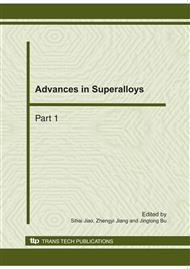p.1519
p.1524
p.1529
p.1536
p.1540
p.1544
p.1549
p.1553
p.1557
Comparative Study on the Performance of New Highly Visible-Light Responsive Photocatalyst Bi20TiO32 with P-25
Abstract:
Comparative research was done on the performance of new highly visible-light responsive photocatalyst Bi20TiO32 with P-25. Surface photovoltage spectrum of Bi20TiO32 indicates that its absorption wavelength starts from 550nm. Under Xe-lamp irradiation and the same catalyst dosage, the apparent rate constant of degrading methyl orange by P25 is 0.0465min-1, which is 2.7 times higher than that achieved by Bi20TiO32 (0.0172min-1). The apparent rate constant of degrading phenol by P-25 is 0.0543min-1, which is 1.8 times higher than that achieved by Bi20TiO32 (0.0296min-1). And the TOC removal of the solution by P-25 is also greater than by Bi20TiO32. But the performance of Bi20TiO32 under visible light irradiation is better than P-25. Under the visible light irradiation (>400nm), the apparent rate constant of degrading methyl orange by Bi20TiO32 is 0.0119min-1, which is 3.13 times higher than that achieved by P25 (0.0038min-1). The apparent rate constant of degrading phenol by Bi20TiO32 is 0.0133min-1, which is 33.25 times higher than that achieved by P-25 (0.0004min-1), and TOC removal by Bi20TiO32 is also much higher than by P-25.
Info:
Periodical:
Pages:
1540-1543
Citation:
Online since:
October 2010
Authors:
Keywords:
Price:
Сopyright:
© 2011 Trans Tech Publications Ltd. All Rights Reserved
Share:
Citation:


